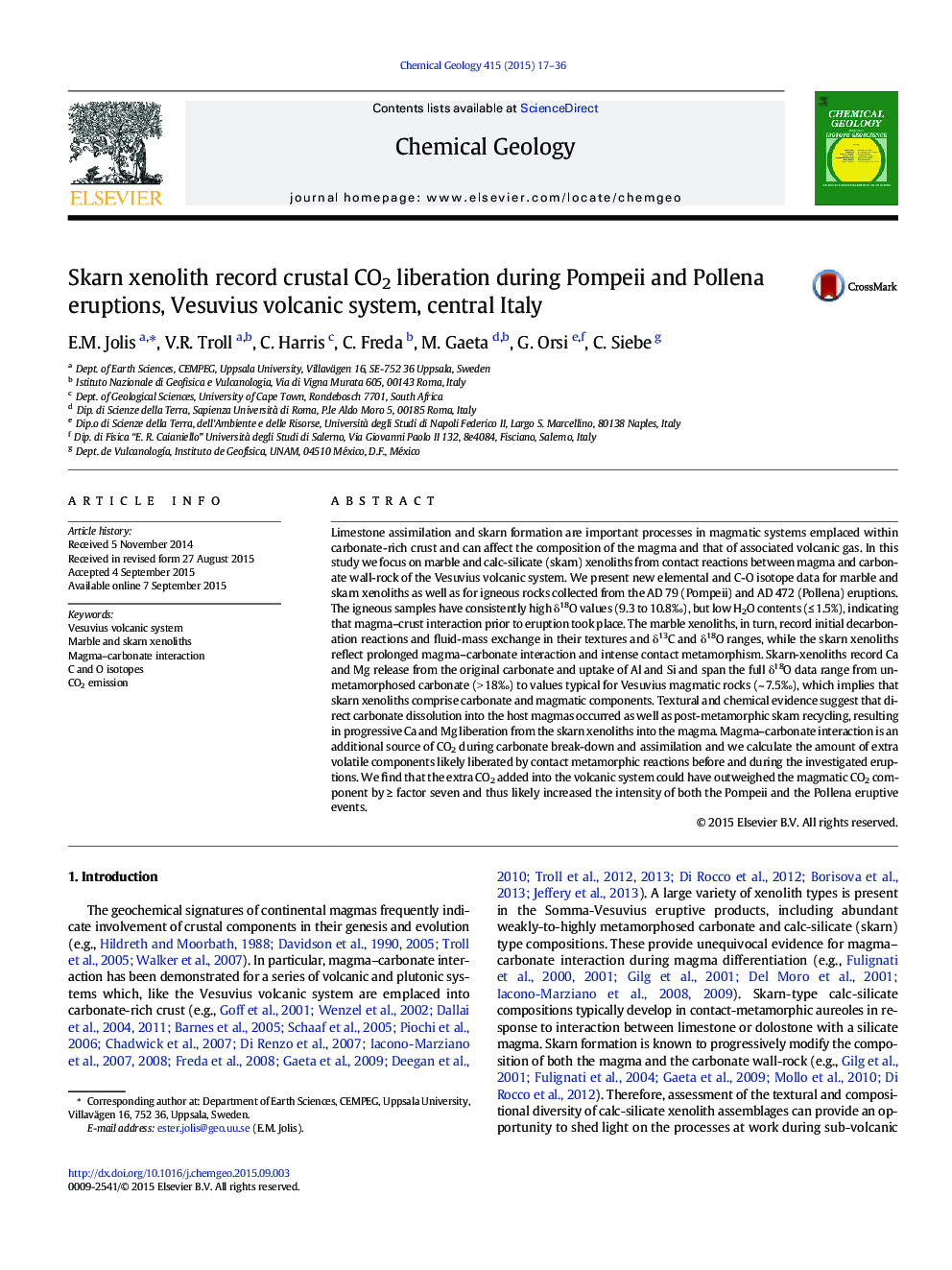| کد مقاله | کد نشریه | سال انتشار | مقاله انگلیسی | نسخه تمام متن |
|---|---|---|---|---|
| 6436221 | 1637559 | 2015 | 20 صفحه PDF | دانلود رایگان |

- New stable isotope data from igneous rocks and contact-metamorphic skarn-type xenoliths from the Vesuvius volcanic system.
- Different mechanisms of magma-crust interaction, such as carbonate dissolution and skarn recycling, are relevant processes.
- A formulation to approximate the potential volumes of magmatic versus non-magmatic CO2 is presented.
Limestone assimilation and skarn formation are important processes in magmatic systems emplaced within carbonate-rich crust and can affect the composition of the magma and that of associated volcanic gas. In this study we focus on marble and calc-silicate (skarn) xenoliths from contact reactions between magma and carbonate wall-rock of the Vesuvius volcanic system. We present new elemental and C-O isotope data for marble and skarn xenoliths as well as for igneous rocks collected from the AD 79 (Pompeii) and AD 472 (Pollena) eruptions. The igneous samples have consistently high δ18O values (9.3 to 10.8â°), but low H2O contents (â¤Â 1.5%), indicating that magma-crust interaction prior to eruption took place. The marble xenoliths, in turn, record initial decarbonation reactions and fluid-mass exchange in their textures and δ13C and δ18O ranges, while the skarn xenoliths reflect prolonged magma-carbonate interaction and intense contact metamorphism. Skarn-xenoliths record Ca and Mg release from the original carbonate and uptake of Al and Si and span the full δ18O data range from un-metamorphosed carbonate (> 18â°) to values typical for Vesuvius magmatic rocks (~ 7.5â°), which implies that skarn xenoliths comprise carbonate and magmatic components. Textural and chemical evidence suggest that direct carbonate dissolution into the host magmas occurred as well as post-metamorphic skarn recycling, resulting in progressive Ca and Mg liberation from the skarn xenoliths into the magma. Magma-carbonate interaction is an additional source of CO2 during carbonate break-down and assimilation and we calculate the amount of extra volatile components likely liberated by contact metamorphic reactions before and during the investigated eruptions. We find that the extra CO2 added into the volcanic system could have outweighed the magmatic CO2 component by ⥠factor seven and thus likely increased the intensity of both the Pompeii and the Pollena eruptive events.
Journal: Chemical Geology - Volume 415, 15 November 2015, Pages 17-36